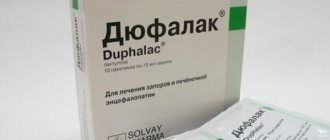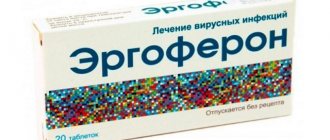Analgin is a drug that has analgesic properties. This drug not only provides pain reduction syndrome, but also helps reduce temperature at elevated levels. Early medicine such as analgin was used for both adults and children. Nowadays, the opinions of experts are divided, as there are fears that the drug is not safe for the child’s body. Is it possible to give analgin to children with fever, as well as the specifics of its use, let’s find out in more detail.
Operating principle
The drug belongs to non-steroidal antipyretic drugs. The main action is aimed at blocking pain impulses. Therefore, parents are interested in the question “Can children be given the drug and what form if the temperature is not reduced by Paracetamol or Ibuprofen?”
After administration, the active ingredient quickly penetrates the bloodstream, so the first signs of improvement in well-being are observed after 20-30 minutes. If an injection is given, a positive result is noted after 10-20 minutes. The effect lasts up to six hours.
Release form and composition
The pharmaceutical industry produces several forms of Analgin for sale, which differ in action.
Main forms of release:
- Rectal suppositories. These are torpedo-shaped, white suppositories, packed in blisters, separated individually (5 pieces per line). One pack contains 10 candles.
- Pills. Another popular form is white, round tablets for oral administration. This form is sold in paper packaging or jars of 10-30 or more tablets.
- Injection form, solution. These are vials or ampoules of 1-2 ml with sterile liquid of 25 and 30%. It is administered intramuscularly or intravenously.
The main active ingredient is metamizole sodium. One milliliter of ampoule contains 250-500 mg of the substance, a tablet - 500 mg, a suppository - 100 or 250 mg.
Additionally, calcium, magnesium stearate, povidone, talc, cellulose and other compounds that create a solid structure are added to the tablet form. The ampoule contains the main substance and sterile water, and the suppositories contain fat.
Analgin suppositories
There are also analgin suppositories that contain 200 mg of the substance.
Actually, I would like to talk about this form in more detail. How to use?
They are prescribed taking into account the age and nature of the disease. So the drug is available in the form of suppositories containing 0.1 g (100 mg) or 0.25 g (250 mg) of the substance. According to the instructions, the dosage has the following classification:
- Contraindicated for children under 1 year of age;
- children aged 1 to 3 years – a 100 mg suppository is administered rectally once a day;
- from 4 to 7 years – 100 mg 2 times a day, the interval between the use of suppositories should be 4-6 hours. Or it is possible to use 1 suppository of 250 mg once a day;
- from 8 to 14 years, one suppository of 250 mg 1–2 times a day is allowed. The interval between the introduction of suppositories should be 4-6 hours.
After administering the drug, the baby should maintain a supine position for 30 minutes. The duration of use of suppositories is prescribed by a doctor, usually 1-3 days.
Directions for use: special instructions
Analgin is used according to the indicated dosage in the form of tablets, suppositories or intramuscular injections. The medicine should not be prescribed without a doctor's recommendation, especially for children.
To reduce the baby's high temperature, gentler suspensions or suppositories are used, for example Ibuklin, Ibuprofen.
The peculiarities of using the medicine are to adhere to the exact dosage according to age. The danger lies in the occurrence of adverse reactions. The drug often causes allergies, which is manifested by a dangerous risk of anaphylactic events.
Analgin provokes a decrease in blood pressure, the possibility of developing agranulocytosis - a diagnosis in which the body is susceptible to fungal or bacterial infections.
The main reactions of the body: fainting, prolonged temperature readings of 35-36 degrees.
The manifestation of side symptoms is accompanied by a decrease in the number of blood leukocytes. The drug should be prescribed to children once, reserved for emergency care or fever reduction.
We recommend reading: Incubation period of ARVI
The composition of the drug is not safe; in large quantities it negatively affects the health of the liver. For children over one year old, the preferred form is suppositories; for children over five years old, tablets are preferred. In emergency situations, when the temperature rises to a maximum of 39-40 degrees, an injectable form of the medicine is acceptable. Analgin injections are used only under medical supervision.
Treatment of pain lasts up to five days, and to reduce temperature - no more than three days. The pediatrician should monitor the child’s health status and, if necessary, prescribe a blood test.
How to bring down a child’s temperature: analgin, suprastin, no-spa
An increase in body temperature indicates the launch of a protective-adapted reaction of the body in response to the active influence of irritants, such as viruses and microbes. High temperature triggers increased work of the immune system, which, in turn, creates a favorable environment for fighting pathogens.
For a healthy and active child, a body temperature of 36.0 – 37.4 degrees is normal and the scale during the day can vary depending on the time of day, the child’s activity and other factors. If changes in a child’s behavior are noted, such as tearfulness, lethargy, loss of appetite and body temperature above standard values, in most cases these symptoms are signs of infectious diseases to which children are so acutely susceptible.
Flu, bronchitis. respiratory diseases, pneumonia - all this causes an increase in the child’s body temperature. If a small patient has a temperature of more than 39 C degrees, this can provoke serious pathologies - convulsions and cerebral edema. Timely intake of antipyretics will prevent the development of aggravating diseases.
If we consider the general indicators of taking antipyretic drugs in children, then this group of drugs is prescribed to small patients in the first 3 months of life at a body temperature of 38 C degrees, over 3 months - 38.5-39 C. If in past cases parents have noticed in children convulsions, fever, then taking antipyretic drugs should be started at temperatures up to 38 C degrees.
Analgin has the following properties:
- Painkillers.
- Antipyretic.
- Anti-inflammatory.
We suggest you familiarize yourself with Antibiotics for toothache - which ones are best to take (names of tablets)
Analgin has many analogues, which basically contain metamizole sodium. They are:
- Tempalgin.
- Dipyron.
- Spazdolzin.
- Pentalgin.
- Cefekon.
- Baralgin, etc.
Indications
Before use, it is important to clarify about the drug Analgin - at what age can it be given to children? The instructions for use contain information that the medicine is used in children from three months, but only a doctor must give approval for the use of a potent drug.
The pediatrician first prescribes milder antipyretic medications, which are approved for children from birth.
Main indications:
- When a child has a high temperature (fever, chills).
- Headache, toothache, traumatic pain.
- Myalgia.
- Burns.
- Postoperative period.
- Biliary, intestinal, hepatic, renal colic.
An analgesic mixture in therapy is prescribed with Diphenhydramine or Papaverine to relieve swelling, for an antispasmodic effect when prescribed by a doctor.
Reviews
Valentina, 40 years old
I used suppositories for the baby. Doctors say that Analgin is undesirable for children, but if there is a risk of seizures or fever, then it is better to use it by adding 0.1 ml of Papaverine or Diphenhydramine intramuscularly. We were prescribed Nurofen suppositories, but Analgin works faster. Children's Paracetamol is an alternative.
Zhanna, 29 years old
I consider Analgin to be the best remedy for children with fever. The intramuscular solution helps. Rectal suppositories are suitable for reducing fever. My baby is already 2 years old and often gets sick with high fever in winter. I am saving him with this drug. I don’t use it for pain relief, I find analogues, Nurofen or Baralgin helps.
Victoria, 31 years old
Parents often wonder whether Analgin can be taken for a child with a fever. I can confidently say that there is no danger; I took it myself as a child. Analgin as a one-time injection instantly brings down the temperature. I add an intramuscular injection of suprastin to enhance the effect. It is important not to get it under the skin, as analgin can cause irritation.
Contraindications
Before the first use, parents should read the instructions, especially find answers to the question “Why can’t Analgin be given to children?” Information about dosage and contraindications is contained in the annotation for any form of the drug.
The medicine should not be prescribed if there is a violation of hematopoietic function, changes in blood tests, or if there is renal or liver failure. Contraindications are the presence of epigastric pain, allergies, a history of bronchial asthma, hereditary anemia, asthma while taking aspirin-containing drugs and other chronic diseases. Analgin can hide the true cause of the disease, so you first need to consult a specialist rather than engage in independent therapy.
When not to give to a child
Treatment with Analgin is contraindicated in case of intolerance to its active compound. In addition, this drug is not prescribed if a blood test shows inhibition of hematopoietic processes, as well as in case of liver or kidney failure.
Under no circumstances should Analgin be used for severe abdominal pain if the child has not yet been diagnosed. This is often a symptom of a serious illness, so eliminating pain can “blur” the clinical picture and interfere with timely treatment.
Analgin should be given very carefully in case of low blood pressure, trauma, allergic diseases and bronchial asthma. If, while taking Analgin, the child's temperature rises, bleeding appears, the oropharyngeal mucosa becomes inflamed, or the blood test results change, treatment is stopped immediately.
Dosage
The instructions for use of Analgin contain information about the dosage and at what age the drug can be taken, but you must consult a pediatrician or call an ambulance in advance.
The dose for the high temperature injection form is calculated based on body weight. Parents should multiply the child’s weight by 5-10 milligrams of the drug - the resulting result will be the normative value for daily intake. This value can be divided by two or three times and administered intramuscularly over 24 hours, calculating the same period of time.
According to the instructions, the drug is prescribed from the age of three months, but some experts are of the opinion that Analgin is best used as a last resort, or after reaching the age of one year.
The general dosage for three-year-olds is 50-100 mg, for four-six years old - 100-200 mg, for school-age children from 7-8 years old - 200 mg, from 13-15 years old the dosage is calculated based on 250-500 mg per day. Up to three years of age, it is advisable to consult a specialist to avoid unnecessary overdose.
We recommend reading: Flemoxin solutab - instructions for use for children
General recommendations for taking an analgesic recommend not taking the drug for more than three days without medical supervision.
Analgin suppositories for children
You can bring the thermometer readings back to normal using rectal suppositories. Analgin is prescribed to infants from three months, half a suppository at a dosage of 100 mg. For older children from 1-4 years old, the recommended dose is one 100 mg suppository. Children from four to seven years old can use 2-3 pieces with a dosage of 100 milligrams or one suppository of 250 mg.
The intestines are first cleansed naturally or using enemas. This ensures the best effect of the drug.
The suppository is carefully inserted into the rectum, after which it is best to lay the child on his side and leave to rest for at least 20 minutes so that the suppository has maximum effect and does not leak back.
Pills
Children from the age of five are recommended to take the oral form, since at this age the chewing and swallowing reflex is fully formed and there is no risk of the child choking. If you have diseases of the stomach or intestines, then it is best to use rectal Analgin.
Due to its aggressive effect on the mucous membrane of the digestive tract, the medicine should be taken with meals or immediately after meals. The daily dose is divided into 2-3 times at the same time interval.
Permissible concentration of Analgin
| Age (in years) | Dosage (mg) |
| Two three | 50-100 |
| Four five | 100-200 |
| Six seven | 200 |
| Eight to thirteen | 250-300 |
| Fourteen years and older | 250-500 |
The dose of tablets or liquid ampoules is best calculated by weight for children under eight years of age. The child’s weight is multiplied by 5-10 mg, thus determining the daily norm.
Solution
The liquid form of the drug is intended for injections. For children under one year of age, Analgin is administered intramuscularly. It is dangerous to administer intradermally or subcutaneously - this will cause local inflammation and irritation.
Intravenous infusions occur only in a hospital setting. Medical personnel observe the dynamics - pulse, respiration, blood pressure and other parameters of the child’s condition. It is important to administer the medicine slowly (1 ml over 60 seconds).
Intramuscular injections are also given at home. The drug is injected into the extreme region of the thigh or shoulder area. Gluteal administration is not recommended due to the risk of introducing Analgin under the skin.
Concomitant use with other drugs
Analgin enhances the effect of other medications that reduce temperature and relieve pain. Among the most popular drugs in this group, along with analgin, are paracetamol, suprastin, but spa, and aspirin.
For a child's fever, paracetamol is more suitable; no-spa relieves pain caused by spasm, and suprastin has an antipyretic, antihistamine (anti-allergic), hypnotic and sedative effect.
We suggest you read: Is it possible to do an MRI after an x-ray?
Thus, suprastin is used for fever associated with an allergic reaction, paracetamol for fever in children, and analgin for very high thermometer readings or pain.
In this case, it does not matter what exactly a person hurts - muscles, stomach or head. Analgin can relieve pain of moderate intensity, i.e. there is no point in taking it as a pain reliever for serious injuries.
The antihistamine effect of Suprastin helps to reduce the temperature, so in some cases analgin is used simultaneously with Suprastin for fever if the child is very ill. This mixture is sometimes called "lytic".
The use of such a mixture can be called a last resort measure, that is, it should be resorted to only if paracetamol and ibuprofen did not help reduce a very high temperature. Before use, you should definitely consult a doctor - call an ambulance or at least call a therapist by phone and ask all your questions.
For children, take a quarter of analgin, suprastin and paracetamol tablets. Adults can take half a tablet of each medicine. It is also possible to inject the mixture, but in this case the likelihood of side effects is higher.
Some people take analgin paracetamol for fever in the complex. These drugs have the same effect, but different composition and mechanism of action.
It is not worth taking several drugs with a similar effect at the same time - it is better to take the most suitable one and wait.
Swallowing a large number of different drugs without results is dangerous. In this case, it is better to call an ambulance.
Analgin and no-spa are taken simultaneously for temperatures above 38.5 C, accompanied by pale skin and chills. This is the so-called “pallid fever”, or malignant hyperthermia. In this condition, vascular spasm is observed, which impedes blood circulation. Signs of malignant hyperthermia are cold pale skin, chills, goose bumps, and cold feet.
For fever, it is better to give children not a whole tablet of analgin with no-shpa; The dosage depends on age - children under 2 years old take ¼ tablet, up to 5 years old - 1/3, younger schoolchildren can be given half a tablet. Children over ten years old can take a whole tablet of analgin and no-shpa for fever, just like adults.
After taking the drug, it is useful to rub the skin with your hands, thus increasing blood circulation, and call a doctor - pale fever is a dangerous condition.
Overdose
An excessive dose of the drug leads to adverse reactions on the part of the young patient’s body. Nausea, vomiting, ear pain, shortness of breath, drowsiness, and weakness occur. The child's body temperature may drop sharply, which contributes to general weakness. A decrease in blood pressure, an increase in heart rate, and a decrease in the volume of urine excreted are also dangerous. Serious poisoning is dangerous: fainting, acute toxic damage to the kidneys, liver, possible convulsive signs, hemorrhagic symptoms, as well as other adverse symptoms of overdose. The described negative manifestations characterize why the permissible dose should not be exceeded.
How can an overdose occur?
Excessive concentrations of metamizole sodium provoke signs of overdose. Gastric lavage, induction of vomiting, as well as taking sorbents and laxatives (Polysorb, Enterosgel, Activated Carbon, Loperamide, Diara) are required. It is necessary to take more clean drinking water to naturally remove toxic substances.
In case of a dangerous overdose, the child is hospitalized in a hospital under constant supervision. In the presence of convulsions, dehydration, severe intoxication, placement in the intensive care unit and intensive care unit is possible, and hemodialysis is prescribed.
To avoid overdose, it is better to offer the child different medication options, including the minimum dose of Analgin.
Drug interactions
If the child has been offered other medications that relieve symptoms of ARVI, antipyretics, painkillers, this should be remembered and reported to the attending physician. An undesirable combination with other medications causes aggravation of the situation and side effects.
Taking Analgin along with other analgesics, allopurinol, and antidepressants increases the toxic effect.
The medicine enhances the effect of ethyl alcohol and ethanol. This must be taken into account when taking mixtures, syrups, and cough drops.
The main effect of the drug is reduced when used together with barbituric acid in the composition of many drugs. When prescribed with tranquilizers, sedatives, and sedatives, on the contrary, the effect of the analgesic is enhanced.
Concomitant use with penicillin-based antibacterial drugs and radiopaque compounds is not recommended.
Tranquilizers, Codeine, antiallergic drugs (Diazolin, Zodak, Zirtek, Suprastin), sleeping pills, sedatives increase the effectiveness of the analgesic.
The effect of hypoglycemic agents, glucocorticoids, and indirect hemostatic drugs is enhanced. Analgin is co-prescribed and does not cause negative effects along with the use of Dexametzone, Warfarin, Prednisolone.
The injectable or tablet form is often mixed in combination with antispasmodics - No-shpa, Papaverine, as well as antihistamines - Suprastin or Diphenhydramine.
Metamizole sodium reduces the blood concentration of Cyclosporine, but increases the activity of treatment with Indomethacin and glucocorticosteroid hormones.
In exceptional cases, Analgin is taken if it is impossible to reduce the temperature with Paracetamol or Ibuprofen.
Price
Prices for analgin tablets: 10 pieces per package from 6 to 30 rubles; 20 pieces from 50 rubles. The price for a package of Analgin solution starts from 50 rubles. Analgin can become an indispensable assistant in an emergency: it will quickly relieve pain and reduce fever. But you should not abuse this medicine. Long-term use, especially in children, can be very dangerous. Before giving a medicine to a child or giving an injection, you should weigh the pros and cons, study the contraindications, and consult a specialist. All these measures will help you make the right decision and not cause harm.
Storage conditions and periods
Analgin is available for sale without a prescription. It should be stored in a dry, not humid place, away from direct sunlight. The permissible storage temperature is no more than + 25 degrees.
The shelf life of the oral form of tablets, injection solution is five years, and suppositories - three years. An opened ampoule cannot be stored - it is used immediately. It is advisable to use an opened ampoule for no more than 15 minutes. The rest is poured out.
The anti-inflammatory, non-steroidal, antipyretic drug causes a lot of controversy and discussion regarding its use in pediatric therapy. It is necessary to read the instructions for use, study the indications, dosages, contraindications, as well as side effects during such treatment.











